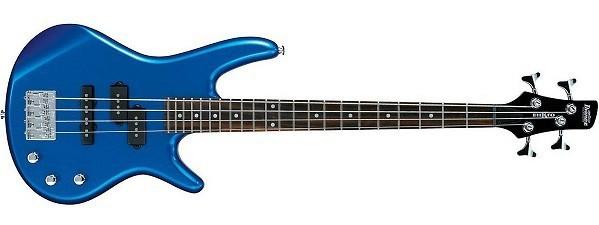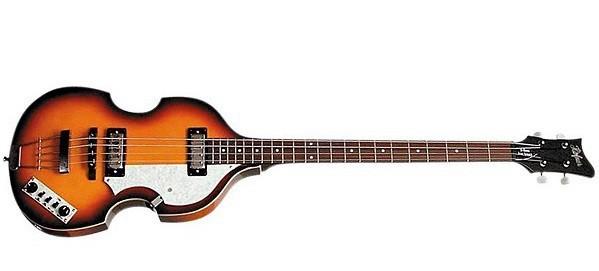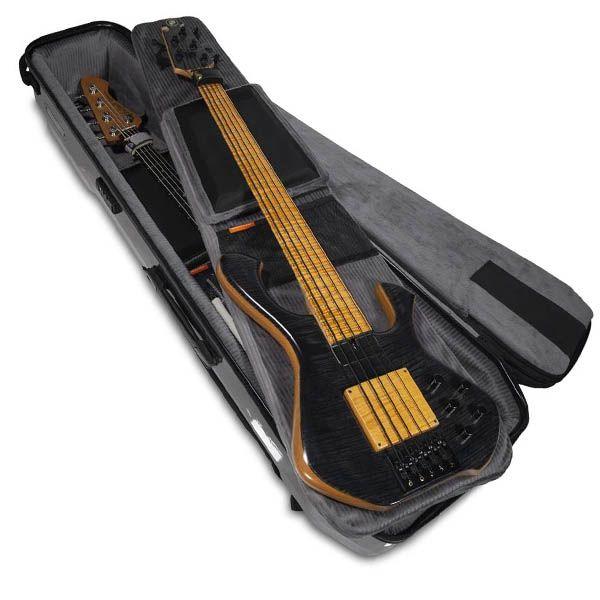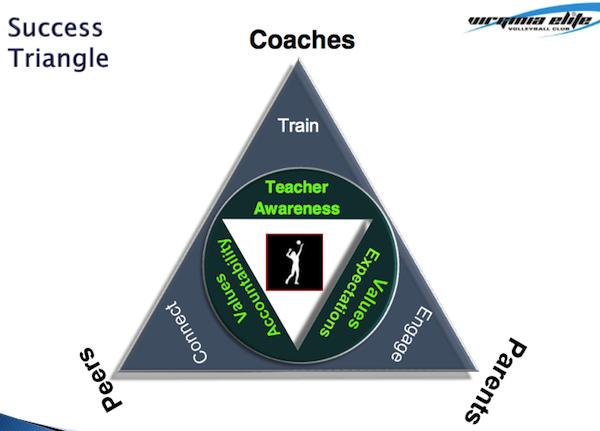Imagine the moment when a child picks up a bass guitar for the first time—the possibility of discovering a lifelong passion plays out in their eyes and fingertips, yet the path and potential remain unspoken and undefined. As a passionate educator who has witnessed this magic, I understand the profound impact that early musical exposure can have on a child’s creative journey. Through personal experience and countless interactions with young musicians, I’ve seen how the right instrument can be a gateway to self-expression and growth.
From the soothing vibrations of an acoustic bass to the electrifying thrill of its electric counterpart, choosing the best children’s bass guitar can feel daunting. This guide seeks to unravel the mystery, offering a blend of informed recommendations and practical insights to empower both children and parents. Dive into the world of children’s bass guitars with me, and let’s explore the options that promise to resonate well beyond the notes played.
Why Choose a Bass Guitar for Children?

What if I told you that the bass guitar is often the backbone of any musical ensemble, making it a valuable choice for young musicians? This engaging aspect of the bass guitar aligns perfectly with the benefits it offers as a beginner instrument. From my years of instructing students of various ages, I’ve *witnessed firsthand* how playing the bass guitar fosters important skills such as teamwork and rhythm—skills that resonate far beyond the musical sphere into everyday life.
Choosing the *best bass guitar for kids*, as parents often realize, involves more than just picking an instrument. It’s about nurturing a foundation in music that is both enjoyable and educational. Learning the bass helps children achieve a deeper understanding of musical structures. The bass guitar, with its distinct role, teaches young players how to *maintain a steady rhythm*, crucial in both solo and ensemble settings.
Furthermore, the bass is one of the more approachable musical instruments for children. Its design and playstyle encourage them to hone their *sense of timing* and develop an *ear for harmony* almost subconsciously. As they advance, they gain confidence, not only in their musical abilities but in life’s collaborative endeavors as well. This journey is not just about creating music; it’s about discovering one’s place within the harmony of a group and growing through that experience.
Types of Bass Guitars Suitable for Kids
Short Scale Bass Guitars

When it comes to choosing the right bass guitar for young players, short scale bass guitars stand out as an ideal option. These instruments typically measure around 30 inches in scale length, offering a perfect balance between size and playability. Throughout my editing career, I’ve seen many talented young bass players thrive with these instruments that suit their size and skill level. It’s all about finding the right fit.
Short scale bass guitars are particularly beneficial because their compact dimensions make them easier for small hands to navigate. This size not only enhances comfort but also allows young musicians to focus on developing their technique without being overwhelmed by standard bass guitar sizes. The lighter weight and reduced tension of the strings further contribute to an ergonomic playing experience, encouraging prolonged practice sessions.
In the broader realm of bass guitar sizes for kids, short scale instruments represent an accessible and practical starting point, ensuring that young bassists can explore their musical potential with ease. As we delve deeper into the types of bass guitars suitable for kids, understanding the value of short scale options becomes essential for parents and educators looking to nurture the next generation of musicians.
Electric vs. Acoustic Bass Guitars

In my experience, the choice between electric and acoustic bass guitars can significantly impact a child’s musical journey. Opting for a kids electric bass guitar often provides the instant feedback crucial for maintaining their enthusiasm and motivation. The electric bass guitar is typically lighter and more manageable for young players, which can be essential in keeping practice sessions enjoyable. Additionally, these models can be more than just entry-level—they’re an affordable bass guitar for children, balancing cost with quality.
On the other hand, acoustic bass guitars offer a raw, unplugged experience that some children may find rewarding. However, the larger body size and heavier weight might pose challenges for smaller kids, potentially impacting their comfort and progression.
Ultimately, the decision between electric vs. acoustic contributes to the broader theme of finding the right instrument for young players, fostering a lifelong love of music. As we explore further, understanding these nuances will assist parents and guardians in making an informed choice.
Top Recommendations for Children’s Bass Guitars

Having authored several instructional books, I understand the importance of selecting appropriate gear for maximizing educational outcomes. The right bass guitar can inspire a lifelong passion. This is especially true when it comes to selecting instruments for young learners. But what are the essential qualities that elevate a bass guitar from good to great for young players? This pivotal question sets the stage for deep exploration into the nuances that make certain bass guitars stand out for children.
Among my top recommendations for youth bass guitar, the short scale variety is often the most suitable. These basses feature a smaller neck, making it easier for little hands to maneuver. The Squier Mini Precision Bass, for instance, is not only budget-friendly but also offers a comfortable playing experience, closely mirroring the feel of its larger counterparts.
An equally important factor is the weight of the instrument. The lightweight Yamaha TRBX174EW captures a sublime balance between robust sound quality and manageable weight, reducing strain and encouraging longer practice sessions — which is essential for fostering a lasting love of music. The vibrant range of colors also allows for personal expression, often overlooked in beginner bass guitar selections.
Enhancing tonal variety, the Ibanez GSRM20 offers dynamic sound options through its versatile pickup configuration. This flexibility allows young players to experiment with different styles, fueling their creativity and keeping their learning journey exciting.
In these recommendations, my aim is to blend functionality and inspiration, using my insights to guide you toward choices that will resonate with and support the ambitions of budding musicians. As we continue to explore essential accessories and firsthand experiences from parents and players, I encourage you to consider how these suggestions can become catalysts for artistic growth and enthusiasm in your child’s musical pursuit.
Essential Accessories for Young Bass Players

From my experience, accessories are not just add-ons; they’re tools that can enhance a child’s learning experience on the bass guitar. Kids are naturally curious, and the right tools can channel that curiosity into creativity. What if the right accessories could help a child unlock their full potential as a bass player? This transformative idea isn’t just wishful thinking—it’s a guiding principle in supporting young musicians.
One of the most essential bass guitar accessories for kids is a well-fitting strap. An adjustable strap helps young players maintain proper posture, minimizing fatigue and fostering comfort during practice. Another critical tool is a quality tuner, preferably one that’s easy for children to use. It empowers them to ensure their instrument always sounds its best, contributing to their understanding of pitch and tone.
A metronome can be a game-changer in adding structure to a kid’s practice routine. With enhanced timing skills, their rhythmic precision reaches new heights. I also find that an instructional tutorial for kids playing bass, often in the form of interactive apps or engaging books, provides guidance and inspiration, bridging the gap between learning and play.
Ultimately, the right accessories do more than support; they enrich a child’s experience, making the journey of learning the bass guitar both enjoyable and rewarding. As we transition to hearing from parents and players, consider how these simple tools might play a pivotal role in your child’s musical adventure.
Experiences from Parents and Players

As someone who has engaged with countless parents and players, I appreciate how sharing experiences can demystify the learning process and encourage others to dive in. *Did you know that many successful musicians credit their early experiences with an instrument as crucial to their development?* This insight perfectly echoes the stories I’ve gathered from families of young bass guitar enthusiasts. The journey often begins with a simple desire to express oneself through music, and the *learning bass guitar young* proves to be a profound milestone for many.
Parents frequently recount the initial challenges and subsequent triumphs when their children pick up a youth-sized bass guitar. The tailored design ensures children can comfortably engage with the instrument, paving the way for remarkable achievements. Emerging rhythms and newfound skills not only boost their musical prowess but also enhance their confidence and creative thinking. These young musicians discover a *world of possibilities* through experimentation and practice.
In my conversations, a common recommendation emerges: selecting the right instrument is pivotal. Many parents advocate for short scale bass guitars, as these are *ergonomically suited* for young hands yet do not compromise on sound quality. This aligns with popular youth bass guitar recommendations that emphasize playability for fostering skill development. Importantly, the transition into discovering their own musical identity often stems from mastering early tunes and rhythms, offering foundational learning experiences that ripple into future success.
*Emphasizing the importance of early instrumental interaction*, families often reflect on the patience and joy that accompanies this musical journey. As we delve deeper into the intricacies of choosing and playing bass guitars, these shared experiences serve as a testimony to the transformative power of music in the lives of young learners.
FAQs
What should I consider when buying a bass guitar for children?
Are there specific bass guitar brands that are recommended for children?
What is the ideal age for a child to start learning bass guitar?
How can I help my child stay motivated to learn bass guitar?
What are some beginner tips for children learning bass guitar?
Conclusion
Are you ready to make a decision that could positively impact your child’s future in music? Reflecting on my own journey and the journeys of my students, I know that choosing the right children’s bass guitar can spark a lifelong love for music. Throughout this guide, we’ve explored the unique benefits of bass guitars for children, from the perfect fit of short scale options to the dynamic contrast between electric and acoustic models.
By understanding these nuances, you can confidently select a bass guitar that aligns with your child’s interests and skill level. Our top recommendations highlight the best instruments available, ensuring quality and playability. Don’t overlook essential accessories, as they can greatly enhance your child’s learning experience.
The testimonials from parents and players underscore the transformative power of the right choice. Implement these insights, and watch as your child’s musical journey unfolds with joy and enthusiasm.

Troy Nelson, a celebrated guitar educator from Viroqua, Wisconsin, has significantly impacted guitar learning with acclaimed books like ‘Guitar Aerobics’ and ‘Fretboard Freedom’. His unique journey from Sports Management to leading roles at Hal Leonard Corporation and Guitar One magazine has shaped his approach to guitar education. Now based in Nashville, Nelson specializes in crafting effective guitar practice routines, enhancing players’ skills and technical mastery. His work is a treasure trove for guitar enthusiasts worldwide.
